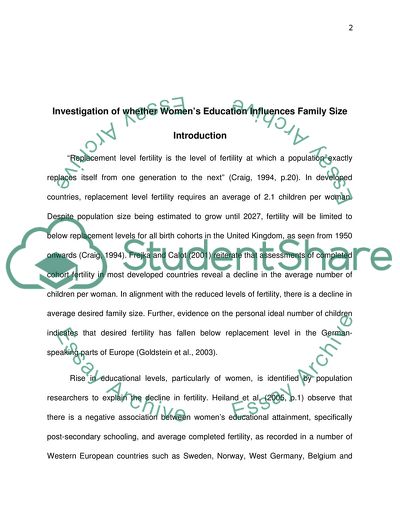Cite this document
(Investigation of whether Womens Education Influences Family Size Literature review Example | Topics and Well Written Essays - 3250 words, n.d.)
Investigation of whether Womens Education Influences Family Size Literature review Example | Topics and Well Written Essays - 3250 words. https://studentshare.org/sociology/1797670-investigate-whether-there-is-a-link-between-womens-education-and-family-size
Investigation of whether Womens Education Influences Family Size Literature review Example | Topics and Well Written Essays - 3250 words. https://studentshare.org/sociology/1797670-investigate-whether-there-is-a-link-between-womens-education-and-family-size
(Investigation of Whether Womens Education Influences Family Size Literature Review Example | Topics and Well Written Essays - 3250 Words)
Investigation of Whether Womens Education Influences Family Size Literature Review Example | Topics and Well Written Essays - 3250 Words. https://studentshare.org/sociology/1797670-investigate-whether-there-is-a-link-between-womens-education-and-family-size.
Investigation of Whether Womens Education Influences Family Size Literature Review Example | Topics and Well Written Essays - 3250 Words. https://studentshare.org/sociology/1797670-investigate-whether-there-is-a-link-between-womens-education-and-family-size.
“Investigation of Whether Womens Education Influences Family Size Literature Review Example | Topics and Well Written Essays - 3250 Words”. https://studentshare.org/sociology/1797670-investigate-whether-there-is-a-link-between-womens-education-and-family-size.


